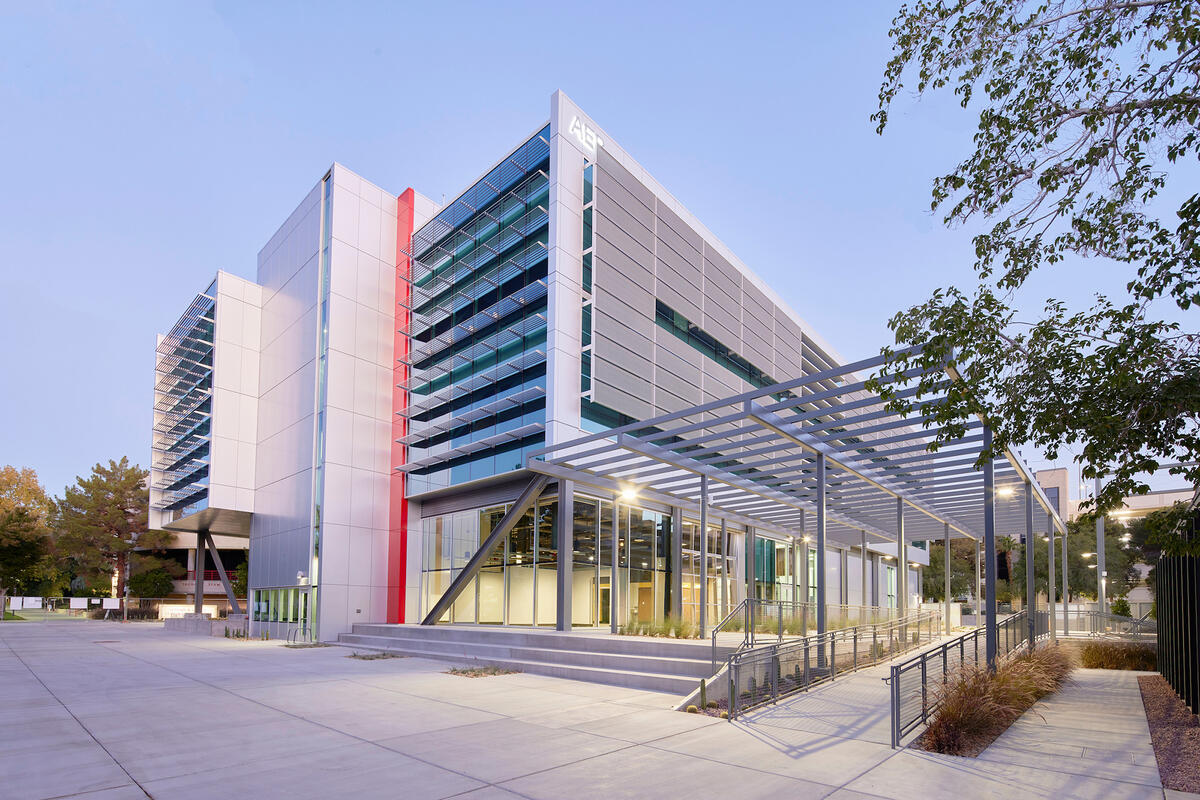
Advanced Engineering Building
Fueling Nevada’s innovation workforce
A Place for Inspiration and Innovation
The Advanced Engineering Building (AEB) is a three-story, 52,000 square-foot idea incubator and innovation generator. From top to bottom, and in every space in between, the AEB facilitates the interdisciplinary collisions and research collaborations that will solve national and regional problems.
As the latest addition to the university’s innovation corridor, AEB helps the College of Engineering meet our skyrocketing enrollment demand in engineering and computer science. It also supports a highly skilled workforce that is integral to Nevada’s economic future.
Constructing a Critical Facility for UNLV and Nevada
Nevada’s future hinges on our ability to attract new industry — particularly those grounded in science and engineering. To achieve this, we are creating the infrastructure to educate the engineers of tomorrow and providing them with research space that prepares them for their professional careers in academia or industry. The new Advanced Engineering Building will enable larger enrollment and more graduates. It will facilitate critical research and foster innovation. And it will pave the way for the vision for Nevada’s future of a robust tech-driven diversified economy.
Support the Advanced Engineering Building
The Advanced Engineering Building has been supported by generous individuals, donor companies, the State of Nevada, and UNLV. In spring 2021, the Nevada State Legislature approved $36.8 million (50% of the total cost) in funding for the building, with matching funds from UNLV and donors. To date, private support has generated more than $10 million in commitments to supplement university funding, enhance facilities, and reduce the carrying debt load.
The building might be open, but we’re just getting started. We’re equipping the engineers of tomorrow and building Nevada’s future. With your help, there’s no limit to what we can achieve together.
Thank You to Our Contributors
The College of Engineering is grateful for the incredible support from all of our Advanced Engineering Building donors, including:
- Fred and Harriet Cox
- Engelstad Foundation
- The Gene Haas Foundation
- NV Energy Foundation
- Buck and Aurora Wong
- Lasting Impact Philanthropic Initiative (AGEM, GLI)
- JT4
- Teresa C. Zalcman
- Southwest Gas Foundation
- Steve and Susan Philpott
- Don Ahern

“Collaborating with colleagues from different fields brings fresh perspectives and diverse expertise, which fosters innovative thinking and problem-solving. The AEB’s dynamic environment allows us to tackle complex research questions from multiple angles, leading to more robust and comprehensive results.”Gabson Baguma, Civil and Environmental Engineering Graduate Student




